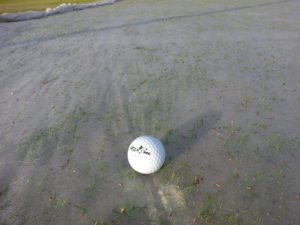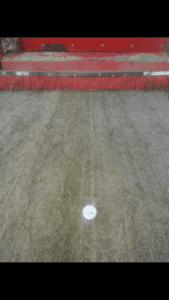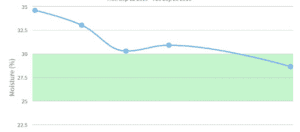🌟 Improve your sports field with a expert audit.

Share on RRSS

Temperate zones are susceptible to C3 or C4 grass varieties, depending on the average temperatures at the time. This is why reseeding is carried out on species C3 on C4, to avoid dormancy and loss of colour of the turf in winter. Increasingly, however, more and more use is being made of the application of pigments on C4 fairways to avoid reseeding, although for football pitches this solution is not valid and requires reseeding.

The ideal time for this will be given by the curves of the growth potentialThe greater the difference in the curves, the less competition between species and the easier it is to establish.
Thus, reseeding of Rye-Grass on Bermuda is mainly common. The most important steps in pre-soil preparation are:
-Decompaction through aeration with top dressing,
-Opening of spaces and reduction of density with scarifying.
Use of re-seeders for lodging at the correct depth where new seeds can germinate.
- including the use of thermal germination blankets.

It is advisable to reduce fertilisation in order to control the growth arrest of the established species and, as new shoots start to appear, fertilisation should be increased from foliar to granular applications. It is advisable to use sand mulches amended with worm castings or other organic matter, to increase the growth rates of the established species, and as the new shoots start to emerge, fertilisation should be increased from foliar to granular applications. microbiological communities beneficial, sheltering the seeds while reducing the need for irrigation and its potential adverse effects such as fungal diseases such as Gray Leaf Spotfrequent in newly established Rye Grass.

Spray dispersants, or applications of iron that dry out the leaf, help to avoid the conditions of humidity persistent diseases that lead to these diseases. In addition, the use of tools that adjust humidity to the optimal range, such as the Visual Insight humidity monitoring and visualisation platform from POGO are particularly useful in these processes, so that there are neither excesses nor deficits, but only what is necessary for optimal germination.

The most commonly used C3 varieties are Perennial Ryegrass with an establishment range of 3 to 4 weeks, Anuual (Italian) Ryegrass, Lolium Multiflorum faster up to 2 to 3 weeks and intermediates such as hybrids between Annual and Perennial Rye, Lolium Hybridum.

We appreciate your interest in us, so we leave you this form so that you can subscribe and have priority access to our exclusive promotions and offersideal for saving money on your purchases and keeping your sports and agricultural fields at the forefront!
In addition, we will keep you informed about the LATEST NEWS in Greens and Agriculture with the latest entries from our Greenkeepedia and Agrikipediaincluding innovations, events and interviews with experts.
Click to subscribe now and get exclusive access!